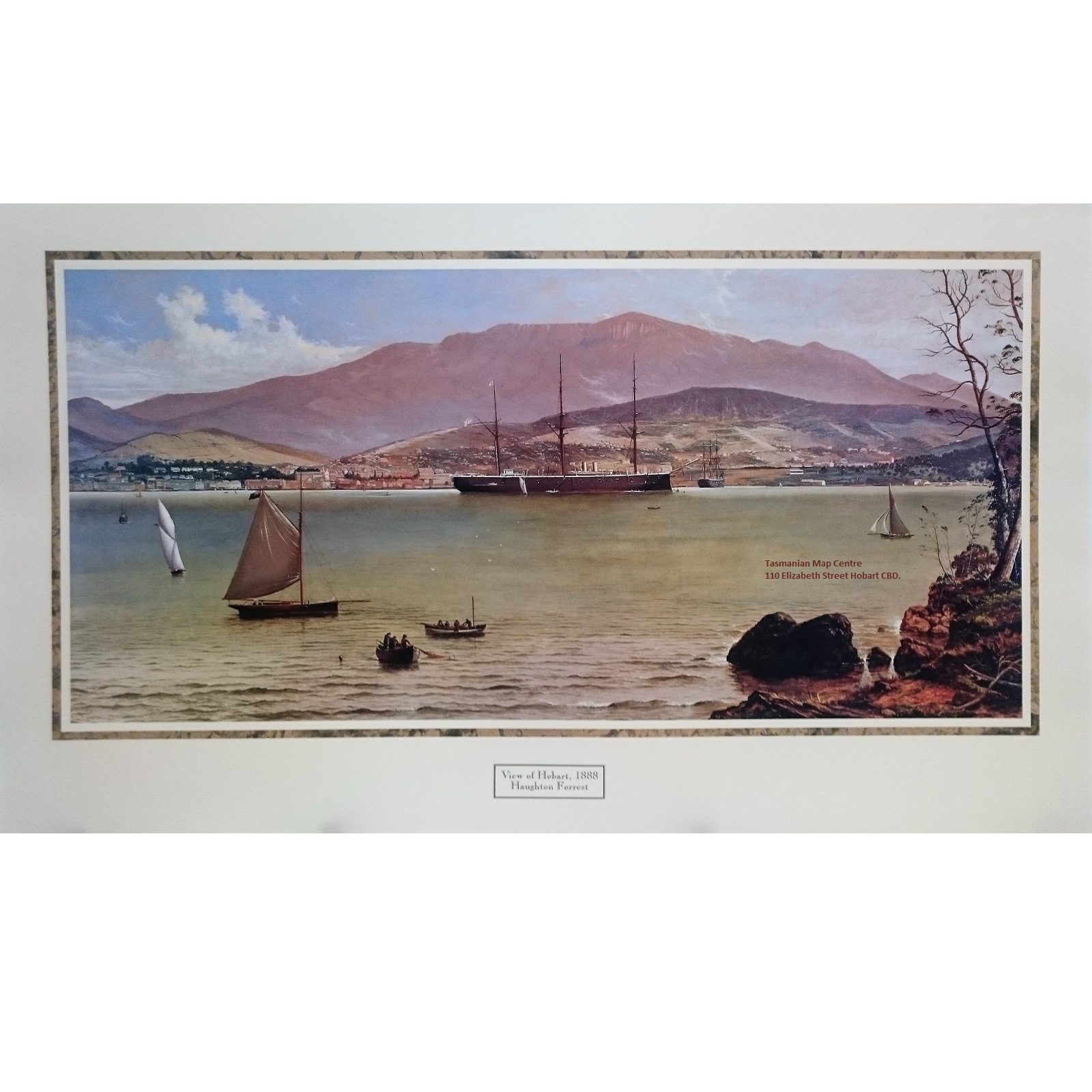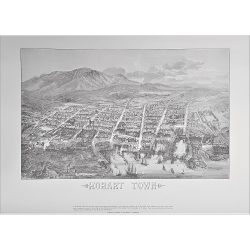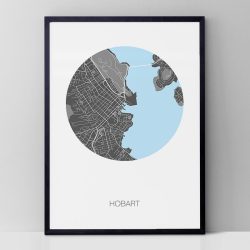Description
View of Hobart, Summer 1888
Haughton Forrest Summer Print, Hobart 1888.
Framing and mounting options available, see us in store for details.
Haughton Forrest (1826-1925), artist, was born on 30 December 1826 at Boulogne-sur-Mer, France, youngest son of Thomas Arthur Forrest, equerry to Queen Victoria, and his wife Mary Lowther, both parents being of distinguished family. Forced to flee to Jersey, England, on the commencement of the French revolution in 1830, the Forrests later travelled throughout France and Germany before returning to their country home Forest Lodge in Berkshire. Young Haughton was subsequently educated in Jamaica, where his father had extensive sugar plantations, and at a military college at Wiesbaden, Germany. In 1852 he obtained a commission in the Honourable Artillery Company of London; he later joined the 31st Royal Monmouth Light Infantry, but resigned after attaining the rank of captain to work for the Post Office in London. On 30 September 1858 at the Plymouth parish church, Devon, he married a widow, Susan Henrietta Bunce, née Somerville (d.1893). Their early married life was spent on the Isles of Wight and Man and in southern England where Forrest spent much time yachting and painting marine subjects, some of which were reputedly commissioned by the Prince of Wales (King Edward VII).
In 1875 Forrest took up a grant of sixty acres (24 ha) in Kittoland, Parana, southern Brazil, but finding conditions unsuitable returned to London. Next year he migrated with his family in the James MacDuff to take advantage of a grant of 100 acres (40 ha) in north-eastern Tasmania. Later he moved to Sorell where he obtained municipal appointments as bailiff of crown lands and of the court of general sessions, inspector of nuisances, of weights and measures, of thistles and of stock. He was also superintendent of police. All these positions he relinquished in March 1881 when he moved to Wellington Hamlets, near Hobart. In 1889-90 he was chairman of the Wellesley Road Trust.
Forrest spent the rest of his life after 1881 fully devoted to his art, painting many fine marine subjects and landscapes. His output, which spanned some seventy years, was prolific, and varied from small oils, painted on board, to large canvases. The marine paintings were usually of stormy scenes in which the vessels were meticulously detailed and the foam-crested breakers remarkably green and translucent. By contrast, his landscapes were peaceful, with mystical backgrounds of hazy blue or purple mountains. In 1899 Forrest’s views of Mount Wellington and Hobart, in conjunction with the photographs of J. W. Beattie, formed the first set of pictorial stamps produced in Australia. He is also known to have painted New Zealand scenes, an occasional still life, a hunting scene and a brood of chickens. The extreme detail and exactitude of Forrest’s technique gave his works a photographic quality which, in earlier years, some art critics strongly deprecated. It is only recently that there has been a strong demand for his paintings.
Forrest died on 20 January 1925 at Melton Mowbray, leaving only a modest estate and survived by two daughters and one of his two sons. Many of his paintings hang in Tasmanian and other Australian art galleries. A self-portrait, in military uniform, under-taken in his early years, is in a private collection in Hobart.





